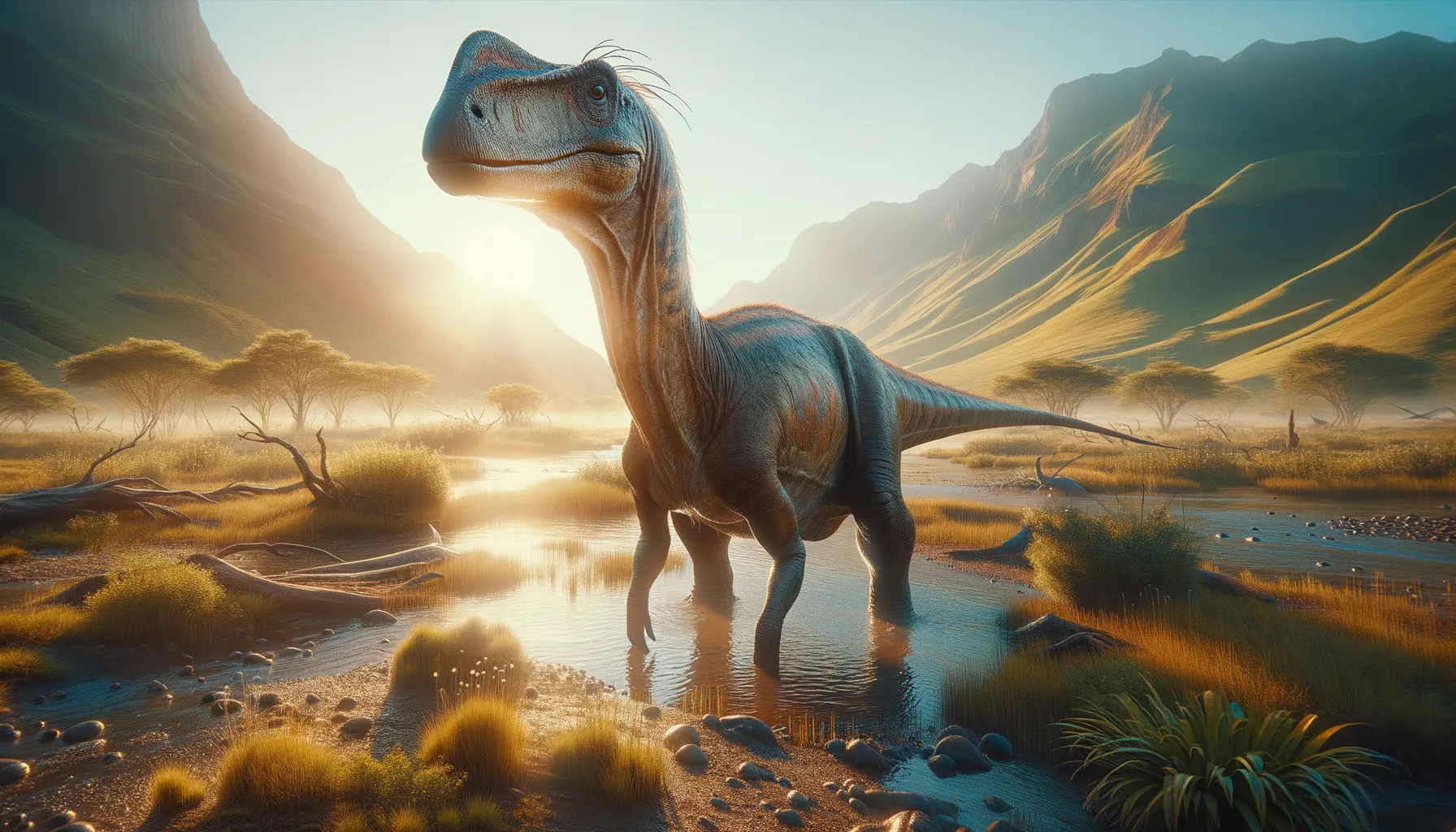
Gobihadros
Discover the ancient 'duck-bill' wonder!
Period
Cretaceous
Length
Measured up to 7.5 meters long.
Height
Stood about 2 meters tall at the hip.
Weight
Estimated to weigh around 1 ton.
Gobihadros was a relatively small member of the hadrosaur family, known for its duck-billed appearance. This dinosaur lived during the late Cretaceous period in what is now Mongolia. Its fossils offer valuable insights into the evolution of hadrosaurs in Asia and suggest it roamed floodplains and open landscapes. Gobihadros primarily fed on plants, which contributed to thriving in its ancient ecosystem by utilizing its specialized teeth to grind vegetation.
Diet
Gobihadros was a herbivore with a diet consisting mainly of plants. It had specialized teeth to help grind tough vegetation. Due to its diet, it played a crucial role in its ecosystem as a plant consumer.
Hunting
Gobihadros was not a hunter; its diet was primarily plant-based. Its flat, grinding teeth were adapted to breaking down fibrous plant material. Gobihadros likely foraged for leaves, seeds, and fruits.
Environmental challenges
Gobihadros faced environmental challenges such as fluctuating weather conditions and varying food availability. Competition with other herbivores for limited resources was another challenge it had to navigate. Predators in its ecosystem posed a constant threat, requiring Gobihadros to remain vigilant. Seasonal changes likely demanded adaptability in finding food and shelter.
Speed
Gobihadros was likely a slow-moving dinosaur.
Lifespan
Gobihadros lived approximately 10 to 20 years.
First discovery
Discovered in the Gobi Desert, Mongolia, in 2008.
Fun Facts
- Gobihadros is a dinosaur that lived about 90 million years ago during the Late Cretaceous period.
- This dinosaur was a hadrosauroid, which means it was an early relative of the duck-billed dinosaurs.
- Gobihadros was discovered in the Gobi Desert of Mongolia, one of the most famous dinosaur fossil sites in the world.
- It was a relatively small dinosaur, measuring about 6 meters (20 feet) in length.
- Unlike some of its later relatives, Gobihadros did not have a crest or elaborate head ornamentation.
- Gobihadros was a plant-eater, feasting on the lush vegetation that existed in its ancient habitat.
- The study of Gobihadros has provided scientists with important insights into the early evolution of hadrosauroid dinosaurs.
Growth and Development
Gobihadros, like other dinosaurs, hatched from eggs. It experienced rapid growth in its early years to reach a size that could protect it from predators. As it matured, its social interactions with other Gobihadros likely played a vital role in its development. Their growth patterns also provide insights into the evolutionary paths of hadrosaurs.
Habitat
Gobihadros thrived in floodplains and humid environments of the Cretaceous period. It lived alongside rivers and lakes, taking advantage of the abundant vegetation. This habitat supported a diverse range of wildlife, including various dinosaur species. The climate was temperate, supporting rich plant life that sustained herbivores like Gobihadros.
Interaction with other species
Gobihadros coexisted with other dinosaurs, both herbivorous and carnivorous. Its primary interactions were likely with fellow herbivores, competing for food resources. Predatory dinosaurs posed a threat, necessitating defensive behavior within Gobihadros populations. These interactions shaped its evolutionary traits and social structures.
Natural lifespan
Gobihadros had a natural lifespan ranging from 10 to 20 years.
Reproduction
Gobihadros reproduced by laying eggs in nests, likely located in safe environments. Nesting in groups may have provided protection from predators and environmental hazards. The eggs were incubated naturally by environmental heat until hatching. Parental care after hatching remains speculative but is considered a possibility among hadrosaur species.
Social behaviour
Gobihadros likely lived in herds for protection and social interaction. Herd behavior may have provided advantages in terms of food finding and defense against predators. Communication within the group could have been through vocalizations or body language. Social structures might have existed, reflecting dominance hierarchies or familial groupings.
Fossil locations
Fossils of Gobihadros have been found primarily in Mongolia's Gobi Desert. This region is known for its rich dinosaur fossil deposits, providing significant finds from the Cretaceous period. The discovery of Gobihadros fossils helps paint a picture of the diverse dinosaur life in Asia. Future excavations may uncover more specimens, offering further insights.
